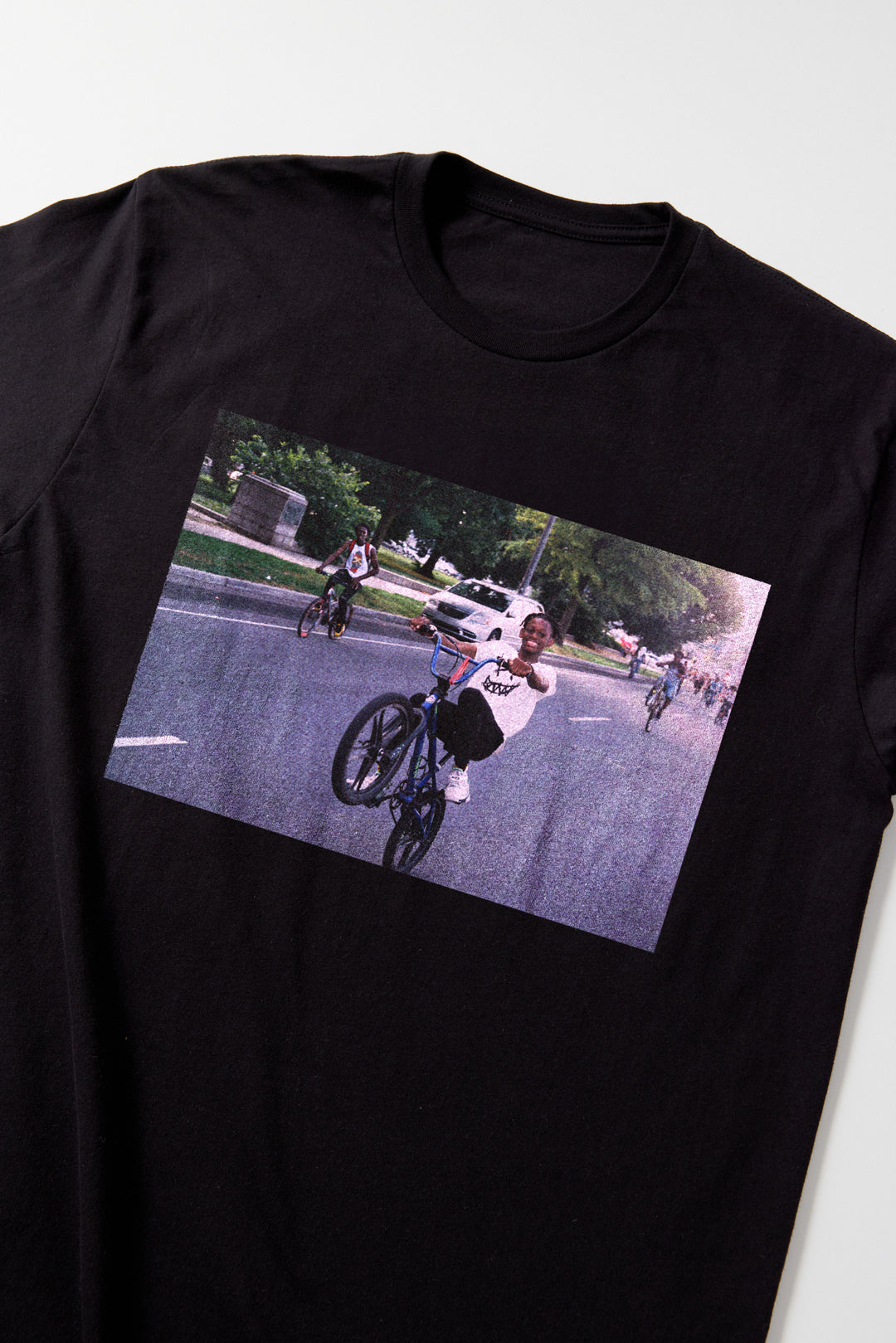No, You Can’t Dress Like Me

Artwork By Kehinde Wiley | Photo By Nia Tara Byrd
“I better not ever catch you outside this house with no headscarf on!” - one of the many universal quips the village of 3 aunts, a mother, and a grandmother used in raising me. One that perplexed a little chocolate girl growing up in Queens who could usually weasel at least one of them into giving me soda without dinner or into letting me stay up until midnight to watch Batman Beyond. My grandma was the first person to get me drunk in 8th grade off of a box of wine because, in her words, she 'didn’t want me to go out thinking I was missing anything special but being a special fool’. Because of it, I didn’t drink in high school. I prescribed to what they taught me as “for my own good”, even when I didn’t understand it, even when I wanted to wear my headscarf. Because in my eyes, they had successfully moved my little brother and I out of a small home where we shared a bed during elementary school to a home with a movie theater. Because that’s what matters right, success? Upward mobility?
No, much like the contents underneath a black girl's bonnet, it’s much, much more layered. I didn’t have the courage or the thoughtfulness to live past my own respectability politics until I got to college. Late nights partying, studying, working, and socializing caught up to me; and I decided “to hell with some of these old rules! I’m wearing my headscarf to the library.” I do admit a pang of guilt for doing so, even recently, but on this day I hung my head low and walked through campus to finish a project. Wearing scarf and slides, I later walked home with 2 friends (one wearing a cardigan, loafers, and olive-toned skin and one brown with bantu knots and jordans, we ran into a crowd of people blocking the entry gate to our apartment complex. There was a racially mixed crowd, caught up in commotion because people were fighting and crowding to see. Not that there was much to see, because the campus police had pulled up a bit ahead of us and were attempting to persuade the crowd to disperse. Apparently it wasn’t fast enough for them because I was grabbed along with my friend and yelled at in the face; apparently, I seemed to be a part of the fight along with the other random brown students who were snatched and forced to sit on the curb. My olive-toned friend had to cease looking for her access pass to explain warmly, ‘caucasianly’ I suppose; that we were her roommates who had just walked back with her from the library. I noticed with my bottom inches from the curb, that unruly white people were walking past with no mention. They let us go, but I realized that day exactly why I wasn’t allowed to wear scarves outside of the house. Underneath an unyielding pressure and reminder that as a black woman I must be packaged in a “pretty” way to be deemed beautiful; It was for my protection from this world’s perception of me.
Traumatized slightly from the experience, I didn’t make that mistake again for years.. So, you can imagine the sour taste left in my mouth when I was scrolling through social media and saw the latest gripe in cultural appropriation; beyond chinese slippers, dreads, baby hairs...they had finally come around to a personal, before bed, staple in my culture and existence; ye old trusty head scarf. Worn like a new trend with an edgy urban flair.



I thought about how that same, ‘edgy urban flair’ makes me a threat when I’m among my own people. I realized I couldn’t wear that out the house because in many measures, though sadly not enough, my best line of defense against discrimination was making sure that I didn’t look like my own people; othering myself from my own community. Then something happened, I got angry. I felt robbed. A lot of us do. It’s not just a simple as, fashion, as it is culture. As an African American woman; it’s these things that we utilize and make our own that are apart of our culture. It’s what we wear. I refrain from attaching myself to African and/or Afro Caribbean/ Latinx/ Asian diasporas because I don’t have the deep generational connections to fully claim or understand them. What I have is my headscarf, my slides, and my box braids on the porch. I have electric slide & spades, church till 6 pm on Sunday, Grandma cursing out my momma for not feeding us (even though she did) -culture. Having to separate myself from these things, compartmentalize them into some only-when-the-good-white-folks-with-the-opportunity-and-power-aren’t-looking impossible box is just that: impossible. For these things to be coded as negative, threatening, classless or trashy on black and brown bodies is asking an impossible question to black people: “Sacrifice these small bits of tradition and culture your ancestors struggled and scraped to make available, a part of your soul in ways, if you want to have accolades to keep your children safe, to be respected in society as a whole and looked upon with high regard.” It’s a catch 22, leaving many of us with confused feelings, existential crisis’, depression, anxiety and loneliness. We become a wound left open to be infected. The salt is watching white and white passing POC have access to a culture that many of us have to pick and choose on, that so many of us have to leave at home to survive and thrive. Durags, beautiful natural coarse curly hair, braids, dickies, dreads, doobie wraps and creatively colored hair, if utilized by black men and women, scream ‘I’m a threat’ or pose the forever racially insensitive downcast of ‘being ghetto’ or a ‘thug’. Our skin and our features do half the work, these cultural artifacts that we have utilized in our lives and communities seem to finish the job.
So no, it is not just about upward mobility and people being petty over fashion. We don’t get upset at these images because we’re tripping with this huge chip on our shoulders or because we don’t want white people to wear what they want. We want others to realize that in a society that has historically dragged it’s feet in claiming responsibility for being institutionally racist, despite being built off of forsaken black lives, we are profiled and attacked for the very culture that allots white and white passing POC social currency and fashion notoriety.


If we cannot connect the dots among these issues of racial prejudice, privilege, and profiling as multifaceted parts of one large, institutional attack against the cultivation of black cultural residency in this country, and in turn black lives as a whole, we will continue to miss the entire point. While being a proud, unapologetically black citizen in this country is still seen as a scarlet letter to many, even those sent to our communities trained to protect us; we must realize the tragic social commentary in wearing those letter A’s for ‘fashion’ and taking them off when many of us are still much like Hester Prynne; a lifetime lived and buried underneath the scarlet letter B.
 |
Nia Tara Byrd is a freelance writer from Charlotte, NC with a passion for science fiction, recreation, womanism, and the many intersectionalities amongst social rights in today’s society. She is a graduate from East Carolina University and is currently in the process of releasing her debut novel. Email: nthall776@gmail.com |

